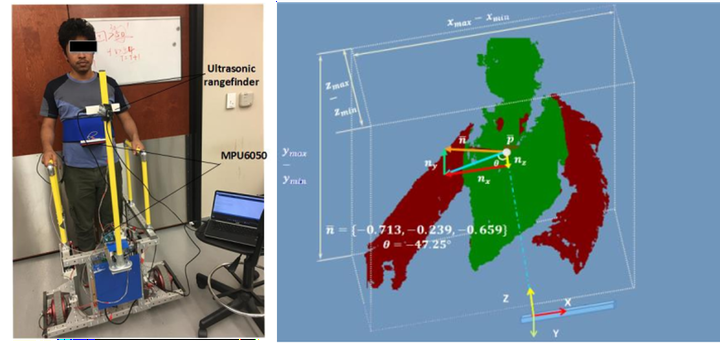Development of a Motorized Robotic Walker Guided by an Image Processing System for Human Walking Assistance and Rehabilitation

Abstract
Impaired mobility negatively impacts a patient’s life, both physically and mentally. Existing tools for the assistance of such individuals include passive walking aids, which tend to disrupt the users’ walking rhythms, and motorized wheelchairs, which preclude the muscle activity of the users’ lower limb. To address these problems, this paper proposes a new robotic walker guided by an image processing system. This system uses visual information from a 3D camera to estimate the user’s position and orientation, and the motion are sent to a PID controller to actuate the robot so that the robot can automatically follow the user to provide assistance if needed. Therefore, for regular walking, the device can accompany the user without interfering with the muscle activity of the lower limbs; for rehabilitation training, it may support the user and provide protection. To reduce the errors of the estimated position and orientation, a discrete derivative term is added into a conventional PI controller to form a mixed PID controller which can reduce the noise from measurement or image processing. Experimental results demonstrated the feasibility of the proposed robotic method, as well as the functionality and effectiveness of the whole robotic system.